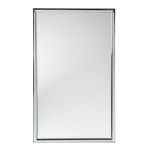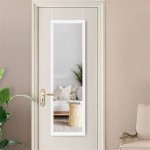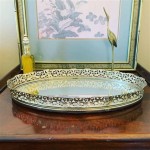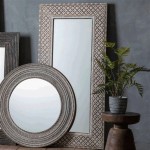Mirror Door Track Replacement
Sliding mirror doors offer a stylish and space-saving solution for closets and wardrobes. However, over time, the tracks these doors glide on can become worn, bent, or damaged, leading to frustrating operational issues. Replacing these tracks can restore smooth functionality and prevent further damage to the doors themselves. This article provides a comprehensive guide to understanding the process and considerations involved in mirror door track replacement.
Identifying the Need for Replacement
Several symptoms indicate the need for mirror door track replacement. Sticking or binding doors are a common sign of track misalignment or damage. If the doors jump off the track frequently, this often points to worn or broken track components. Loud noises, such as grinding or scraping sounds during operation, also suggest track issues. Inspecting the tracks for visible damage, such as bends, cracks, or loose sections, can confirm the need for replacement.
Types of Mirror Door Tracks
Mirror door tracks typically come in two main varieties: top-mounted and bottom-mounted. Top-mounted tracks carry the weight of the doors, using rollers attached to the top edge of the doors. Bottom-mounted tracks primarily guide the doors and prevent them from swaying. Some systems utilize both top and bottom tracks for optimal stability and smooth operation. Understanding the type of track installed is crucial for selecting the correct replacement.
Within these categories, variations exist in material and design. Tracks can be made from aluminum, steel, or plastic. Aluminum is a popular choice due to its lightweight nature and corrosion resistance. Steel offers greater strength but can be susceptible to rust. Plastic tracks are generally less durable and suitable for lighter doors. Track designs also vary based on the door's weight and size. Heavier doors require more robust tracks with larger rollers.
Preparing for Track Replacement
Before beginning the replacement process, gather the necessary tools and materials. These typically include a screwdriver, hammer, measuring tape, level, safety glasses, and the replacement track kit. Taking precise measurements of the existing track ensures the correct replacement size is purchased. Photographing the existing track configuration can be helpful during reassembly. It’s important to remove the doors carefully from the existing track to prevent damage to the mirrors or surrounding framework. This often involves lifting the doors upwards and outwards, disengaging them from the track system.
Installing the New Track
Installation procedures vary depending on the specific track design. Generally, the process involves attaching the new track to the door frame using screws or other appropriate fasteners. Ensuring the track is level and securely fastened is crucial for proper door operation. If the track comes in multiple sections, these need to be joined seamlessly to avoid creating bumps that could impede door movement. Some systems require the installation of mounting brackets before attaching the track itself.
Reinstalling the Doors
Once the new track is installed, carefully rehang the doors. This usually involves inserting the rollers into the track and ensuring they engage correctly. Test the door movement to ensure smooth gliding and proper alignment. Adjustments may be necessary to fine-tune the door fit within the frame. Some systems use adjustable screws within the track or on the door hardware itself to achieve optimal alignment and smooth sliding action.
Maintenance and Longevity
Regular maintenance can extend the lifespan of mirror door tracks and ensure smooth operation. Periodic cleaning of the tracks removes dust, debris, and hair that can accumulate and interfere with door movement. Lubricating the rollers with a silicone-based lubricant can also improve sliding action and reduce wear. Inspecting the tracks periodically for signs of damage, such as loose screws or bends, allows for timely repairs and prevents more extensive issues.
Choosing the Right Replacement Track
Selecting the correct replacement track is essential for optimal performance. Consider factors such as door weight, track material (aluminum, steel, or plastic), and mounting type (top, bottom, or both). Consulting with a hardware store professional can help ensure the right track is chosen for a specific application. Comparing different brands and models can help identify the best option in terms of quality, durability, and price.

23 241 60 Sliding Mirror Door Bottom Track Swisco Com

Worksavers 72 Inch Sliding Door Bottom Track The Home Depot

23 240 48 Sliding Mirror Door Bottom Track Swisco Com

23 272 71 Bottom Concave Roller Track Swisco Com

23 240 48 Sliding Mirror Door Bottom Track Swisco Com

Custom Closet Doors United States Door And Mirror

23 244 48 Sliding Mirror Door Top Track Swisco Com

6 Closet Bottom Door Track Swisco Com

Reliabilt 96 In Bi Pass Door Sliding Closet Track The Tracks Kits Department At Com

96 Sliding Mirror Closet Door Bottom Track Doors








